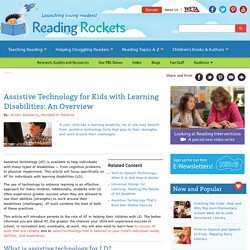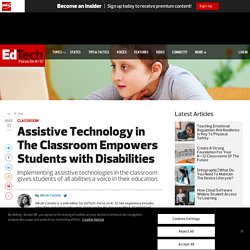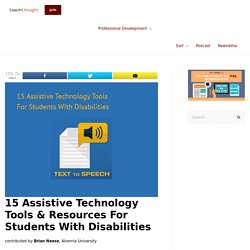

What is Assistive Technology?
READING Assist Tools/Resources. WRITING Assist Tools/Resources. MATH Assist Tools/Resources. Assistive Technology for Kids with Learning Disabilities: An Overview. Assistive technology (AT) is available to help individuals with many types of disabilities — from cognitive problems to physical impairment.

This article will focus specifically on AT for individuals with learning disabilities (LD). The use of technology to enhance learning is an effective approach for many children. Additionally, students with LD often experience greater success when they are allowed to use their abilities (strengths) to work around their disabilities (challenges). AT tools combine the best of both of these practices. ATAEM: Assistive Technology & Accessible Educational Materials Center. AT Tools (Apps, Software, Hardware) The Assistive Technologies That Are Helping Students with Disabilities. This is just one example of how technology can give students who think and learn differently a more personalized and accessible learning experience.

Referred to as assistive technology, these tools are “any type of equipment or software that helps people to work around the challenges they have, whether that be with learning, communication or mobility,” explains Kara Ball, an elementary science and STEM education specialist for Baltimore City Public Schools and a special education expert at Understood, a nonprofit organization providing support for people with disabilities and their families. But what types of assistive technology tools are out there? And how can educators best use them in a modern learning environment to help students of all abilities reach their full potential? Assistive Technology. 15 Assistive Technology Tools For Students With Disabilities. Contributed by Brian Neese, Alvernia University Assistive technology tools are among the least ‘celebrated’ but most crucial tools in K-12 education today.

According to the National Education Association (NEA), the number of U.S. students enrolled in special education programs has risen 30 percent over the past 10 years. Additionally, the NEA reports that nearly every general education classroom in the country includes students with disabilities, as three out of every four students with disabilities spend part or all of their school day in a general education classroom.
One tool to help students with disabilities even in the face of a special education teacher shortage is assistive technology. Today, assistive technology tools can help students with certain disabilities learn more effectively.